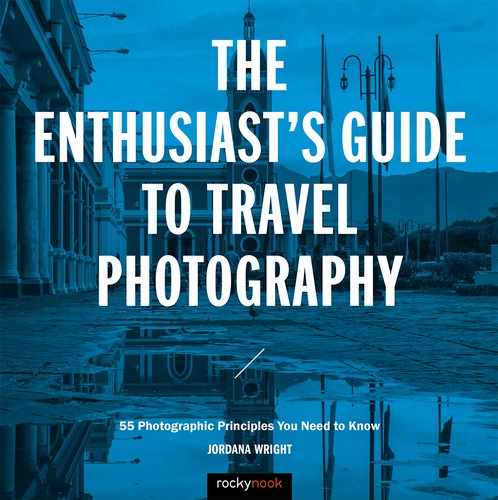48. CAPTURING THE URBAN ENERGY

ALL CITIES HAVE their own energy and pace. Whether it’s the typical rush hours before and after work or a bustling weekend filled with shopping and sightseeing, photographing a location’s unique urban energy will help define a city’s atmosphere and personality.
To Freeze or to Blur?
Cities like Tokyo or New York immediately bring to mind images of constant movement and frenetic pace: crowded sidewalks and crazy traffic. There is something exhilarating about the urban hustle—the view changes from moment to moment and the photographic possibilities are endless. When I explore a new city, I like to visit the busiest areas to capture a sense of the people and the energy. Places like train stations (Figure 48.1), major streets (Figure 48.2), markets, and squares (Figure 48.3) can almost guarantee an abundance of unique energetic moments. Sit on a bench, or snug yourself up to a building or lamppost to stay in the midst of the action while remaining out of the way enough to photograph the activity.
In a massive crowd, a fast shutter can freeze the movement and allow the viewer to examine all the details. Whether you’re photographing a surge of commuters or a drove of tourists, a split-second exposure will give you access to all the little moments that you otherwise might not have noticed. Facial expressions, activities, and interactions will be captured and preserved. When you shoot at a higher shutter speed in crowds, consider taking several exposures for each composition. Tiny changes can make all the difference, and you’ll have the chance to pick which shot best defines the moment later on.
Although faster shutter speeds can be effective, a bit of blur can help an image seem more energetic by implying movement and minimizing distractions. If I’m shooting outdoors in bright daylight, I’ll use a neutral density filter and a tripod so I can use a slower shutter speed. Shooting indoors and at night will allow you keep the shutter open longer without overexposing, but avoid keeping the shutter open for longer than a second. Longer exposures will blur the movement so much that it begins to feel more like peaceful flowing water rather than busy, erratic city life (Figure 48.4). Typically anywhere between 1/60 and 1/15 in daytime, and 1 or 2 seconds at nighttime will be slow enough to capture motion blur without things getting too flowy (Figure 48.5).
48.1 Grand Central Terminal, New York, New York
ISO 100; 20 sec.; f/7.1; 18mm
48.2 Granada, Nicaragua
ISO 800; 1/125 sec.; f/14; 18mm
48.3 Plaza Mayor, Madrid, Spain
ISO 100; 1/100 sec.; f/4.5; 30mm
48.4 This exposure is so long the movement is blurred to a point of flowiness. New Orleans, Louisiana
ISO 100; 13 sec.; f/18; 17mm
48.5 This much shorter exposure implies movement while maintaining some detail in the crowd. New Orleans, Louisiana
ISO 100; 2 sec.; f/7.1; 17mm





